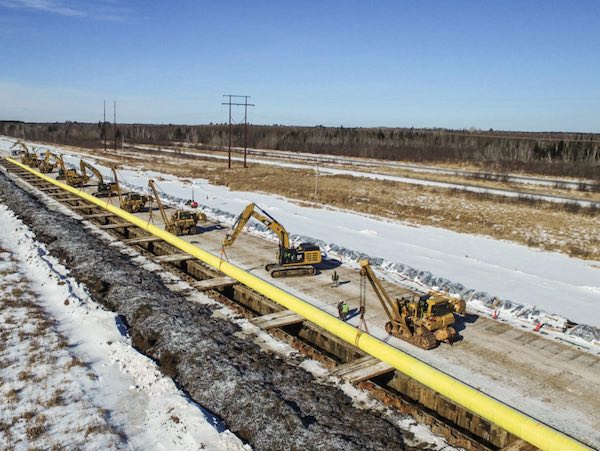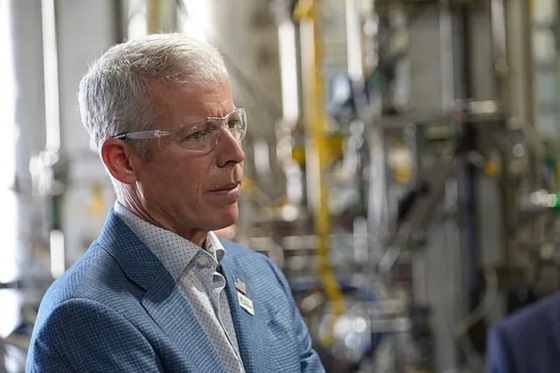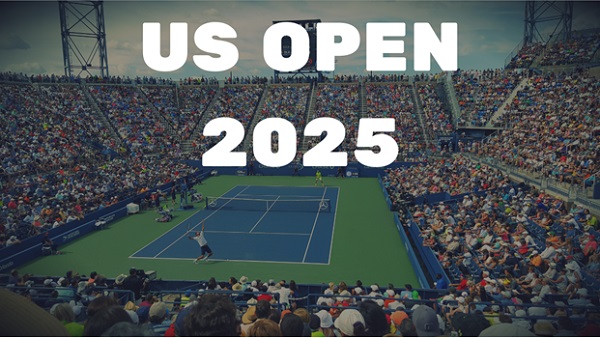First Nations
Ottawa’s Land Claims Program Is Spiralling Out Of Control

From the Frontier Centre for Public Policy
Ottawa paid $7.1B for land claims in 2024-25 alone, raising concern that soaring costs and weak accountability are shortchanging taxpayers
Ottawa is quietly handing out billions in Indigenous land claims, and the costs are soaring far beyond what most Canadians realize.
A new report from Tom Flanagan, professor emeritus at the University of Calgary and senior fellow at the Fraser Institute, warns the federal government’s specific claims program is spiralling out of control. In the 2024-25 fiscal year alone, Ottawa settled 69 claims worth $7.1 billion. Just a decade earlier, in 2014-15, only 15 claims were settled, at a total cost of $36 million. That’s an increase of nearly 200 times in dollar value.
At the centre of the problem is a 2017 directive from then-justice minister Jody Wilson-Raybould. It told federal lawyers to negotiate settlements instead of contesting Indigenous claims in court. Framed as a conciliatory approach, the directive has instead prevented government lawyers from defending decisions made more than a century ago.
The result is that Ottawa is conceding even weak cases, creating a flood of settlements with little accountability to taxpayers footing the bill.
Many of these cases, often called “cows and plows” claims, involve allegations that Ottawa underpaid bands for livestock, equipment or other provisions promised in historical treaties. At the time, the sums were often just a few hundred dollars. But with decades of compound interest added, those claims have ballooned into multimillion-dollar payouts. Flanagan argues that compensation must be grounded in fairness, not in payouts so large they threaten the public purse.
To restore fairness and accountability, Flanagan’s report lays out a clear path forward:
- Rescind the practice directive that ties the hands of government lawyers in resolving claims from Indigenous bands;
- Recognize that bands have already had more than 50 years to make claims, so it is time to set a date when new claims will not be accepted;
- Ensure that the First Nations Fiscal Transparency Act is enforced; and
- Reject the Assembly of First Nations’ proposal that would substantially increase the number and values of claims.
Flanagan warns that without these changes, the program will continue to expand, putting Canadian taxpayers at greater risk and undermining confidence in the system.
Transparency is central to any fair system, yet here, too, Ottawa has failed. In 2016, the federal government announced that bands would face no penalties for failing to file financial reports. Predictably, compliance has dropped.
By 2024, only 260 of Canada’s roughly 630 bands—just 41 per cent—had submitted reports. If Indigenous governments want recognition as autonomous authorities, they must also meet the same standards of transparency required of provinces, municipalities and school boards. Canadians deserve no less.
Those failures come with a steep price. As of March 31, 2023, the federal government reported $76 billion in outstanding obligations, including costs for pensions, environmental cleanup and legal settlements. More than half—$42.7 billion—was tied to Indigenous land claims. These obligations don’t just sit on the books; they threaten Canada’s broader economic health. Unless Ottawa regains control, the costs will continue to climb, undermining fiscal stability.
The consequences of inaction will be severe. If the country slips into recession under the weight of ballooning obligations, Indigenous communities—many already struggling economically—will be among the hardest hit.
A program meant to deliver justice could end up worsening conditions for the very people it was designed to help.
Canadians want fairness for First Nations. But they also deserve accountability for how billions in tax dollars are spent. Flanagan’s report, Specific Claims: An Out-of-Control Program, gives Ottawa a roadmap to deliver both. The question now is whether the federal government has the courage to act before the costs spiral even further out of control.
Rodney A. Clifton is a professor emeritus at the University of Manitoba and a senior fellow at the Frontier Centre for Public Policy. Along with Mark DeWolf, he is the editor of From Truth Comes Reconciliation: An Assessment of the Truth and Reconciliation Commission Report (2024).
Business
A Practical Path to Improved Indigenous Relations

By Tom Flanagan
“Reconciliation” has been the watchword for Canada’s relationship with its Indigenous peoples for the last 10 years. So, how’s that going? Not so well, in my opinion. Canada has apologized profusely for Indian Residential Schools, including imaginary unmarked graves and missing children. As prime minister, Justin Trudeau tripled the Indigenous budgetary envelope, his government committing to pay tens of billions of dollars in reparations for alleged deficiencies not just of residential schools but day schools, Indian hospitals, adoption and child welfare services and other policy failings.
Yet when Prime Minister Mark Carney recently brought in legislation to facilitate construction of desperately needed major projects, prominent First Nations leaders focused on the perceived affront to their powers and privileges, with some threatening to block Carney’s entire initiative by reviving the Idle No More protests and blockades of the 2010s.
Our current impasse arises from 250 years of decisions that are now almost impossible to change because they have been made part of Canada’s Constitution, either by elected politicians or by appointed judges. “Big new ideas” are thus virtually impossible to implement. But there is still room for incremental innovations in public policy that focus primarily on economic opportunities benefiting Indigenous Canadians, i.e., on pursuing prosperity and the good things that come with that.
In my opinion, Canada’s First Nations have two major ways to achieve prosperity. Those bands located near cities and large towns can pursue commercial and residential real estate development, as a number are doing – witness, for example, the large Taza development led by the Tsuut’ina (Sarcee) nation along Calgary’s southwest section of its Ring Road.
Those in more remote locations, meanwhile, can pursue natural resource-based development such as oil and natural gas, hard rock mining, hydroelectricity, fisheries and tourism. Unfortunately, much resource development has been blocked by environmental purists in coalition with the minority of First Nations people opposed in principle to modernization.
Emblematic of this dynamic was the bitter opposition by a small number of First Nations members to the Coastal GasLink natural gas pipeline in northern B.C. that was to feed the new LNG Canada liquefied natural gas terminal at the West Coast port of Kitimat – a project heavily favoured by the Haisla Nation, which has basically staked its economic future on LNG. Despite the opponents’ vandalism and violence, fortunately the pipeline was built and Canada’s first cargo of LNG recently departed Kitimat for markets in East Asia.
So this is clearly an avenue of progress. Indigenous equity ownership of resource projects does not require constitutional changes, and it will help to solidify First Nations’ support for such projects as well as increase the standard of living of participants. With judicious investment, there can more First Nation success stories to rival real estate development at Westbank, B.C. and oil sands service industries at Fort McKay.
Loans and loan guarantees are not without risk, however, and sometimes the risks are great. When offering equity ownership to First Nations, it would be best to concentrate on smaller and medium-sized projects where due diligence is possible and political interference can be minimized.
It also would make sense to diminish First Nations’ current obsession with grievances and reparations. Much of this is derived from Jodi Wilson-Raybould’s “practice directive” issued when she was Trudeau’s Minister of Justice, instructing federal lawyers to prefer negotiation over litigation, i.e., no longer to vigorously defend the Government of Canada’s legal position in court, but essentially to surrender. This document has no constitutional status and can be repealed by a government that realizes how much damage it is doing.
Then there is the reserve system, the bête noire of so many critics. Even as there is no constitutional prospect of abolishing Canada’s system of some 600 mostly small and often economically unviable reserves, there is no good reason for making them artificially attractive places to live, either – as has been done by making them havens from income and sales taxes. This came about through a wrong-headed 1983 Supreme Court decision, Nowegijick v. The Queen, expanding the immunity from property tax conferred by the Indian Act to cover income taxes as well.
But this exemption is based on legislation, not the Constitution; thus, Parliament could change it through ordinary legislation. Ending or reducing the tax haven status could be part of a larger deal to help First Nations participate more fully in the economy through a program of loans and loan guarantees.
These changes are modest, but now is the right time to consider them. It is widely agreed that, even apart from Trumpian threats, Canada needs policy renovation after a decade of Justinian progressivism. The federal debt has doubled, the annual deficit is spiralling out of control, our defence effort is underfunded, and declining labour productivity has affected our ability to pay for basic public services.
Endless moralizing plus grotesque overspending in the name of reconciliation symbolizes the progressive concern with what Friedrich Hayek called “the mirage of social justice” to the detriment of other affairs of state. It’s high time for a course correction in many areas, including Indigenous policy.
The original, full-length version of this article was recently published in C2C Journal.
Tom Flanagan is professor emeritus of political science at the University of Calgary.
Alberta
Line 3 replacement helps Native American community curb poverty, says Indigenous business owner

‘We wanted to let other people know that all the Native Americans don’t oppose the pipeline’
Article from the Canadian Energy Centre
Written by Deborah Jaremko
On the White Earth Reservation in northwest Minnesota, Matt Gordon takes great pride that his family’s Native American-owned construction company is able to help workers support their families in a region where 21 per cent of the population lives in poverty.

Gordon Construction is working on Enbridge’s Line 3 Replacement Project, and that ongoing work is helping provide vital jobs and income for a region that has seen its share of struggles.
The company has over 150 employees, 60 of whom are recognized federally as Native Americans, Gordon says. Of the other 90 employees, many are married to a Native American member, supporting a Native American family, or living on the reservation.
“All that money stays on the reservation. One guy that works or one lady that works, they take care of not only their children or their significant other or spouse, they take care of their aunt or their grandma. It’s a big web is what they take care of,” he says.
“These are union jobs for a lot of these people. You get hours built up and good health insurance. You don’t have to go to Indian Health anymore. You have a retirement after you’re vested and you have a sustainable income.”
Activist hypocrisy
After anti-pipeline activists wreaked havoc on a worksite earlier this month, Gordon and five fellow Native American business leaders working on Line 3 released a joint letter calling out activists in part for “intentionally creating a false narrative that there is no Native American support for this project and the economic impacts and opportunities it brings to our people.”
The work of Native Americans employed by Gordon Construction and other companies were disrespected and put on hold when protestors descended on the work site, claiming to be defending the environment and Indigenous rights.
“They ended up not only damaging our equipment, they put gravel in our fuel tanks, in our hydraulic tanks, flattened all the tires. They essentially took that place over for almost 24 hours. They just left garbage everywhere,” Gordon says.
“It’s a touch of irony how these people are coming in to say they’re there for the environment, but then it’s just total chaos and anarchy and then they leave a mess. It took three days for that place to be cleaned up before we could go back to work.”
Gordon says the letter was also a reminder that there’s not universal opposition to Line 3 from Native Americans.
“We wanted to let other people know that all the Native Americans don’t oppose the pipeline,” Gordon says.
“It’s a good thing all the way around up in the northwest Minnesota corridor.”
Early advocate for Line 3
From his office window in the small town of Mahnomen, where his family has been for generations, Gordon often sees oil trains rolling by. It’s an ongoing reminder of both the power of U.S. oil demand and the risks of transportation without pipelines.
“We see oil coming up and down every day. It’s not going to stop just because one pipeline shuts down,” he says. “Pipelines are indisputably safer.”
Gordon was an early advocate of the Line 3 project, having previously worked with owner Enbridge including doing pipeline integrity digs for safety inspection on the existing pipeline.
“Essentially they have a structure set up on safety and environmental similar to that of working for the government, but I would say it’s even more stringent,” he says.
“My big thing of it is that they are a fair company. They work with you and they’re not trying to bankrupt you or make you lose money. They want you to succeed because if you’re a success, they’re a success.”

Benefits in Mahnomen
Mahnomen County, inside the White Earth Reservation, has the lowest per capita income in Minnesota. It’s about $21,000 per year, according to the U.S. Census Bureau.
Gordon says that working pipelines, community members are able to make much more.
“You’re looking at guys that are working 60 hours a week, anything after eight hours a day is overtime, and all these guys are bringing home $2,500, $3,000 a week, which is huge to a lot of people in the community. Pretty proud of that fact.”
In addition to its contracts on the new Line 3, Gordon Construction is looking forward to supporting decommissioning and reclamation of the existing pipeline.
“Not only are we working now, but we’ll be working in the future when they’re doing the decommissioning of the line and shutting the old line down with final restoration. That’ll be a two to three year project,” Gordon says.
“We’ll have 40 to 60 guys dedicated to the final restoration portion after the line is done. And then you have the decommissioning aspect, and we’re trying to help support that process also.”
-

 COVID-191 day ago
COVID-191 day agoTamara Lich’s Prosecution Is A Warning To Western Canada
-

 Alberta1 day ago
Alberta1 day agoFederal climate plan could trigger Alberta recession
-

 Business8 hours ago
Business8 hours agoCarney’s Move to Strip Religious Charities Undermines Canada’s Foundations, Liberal Elder Warns
-

 Bruce Dowbiggin1 day ago
Bruce Dowbiggin1 day agoUnder Pressure: Boo Jays Become Blue Jays. Now What?
-

 espionage2 hours ago
espionage2 hours agoBeijing’s Secret Biowar: National Security Experts Probe Fentanyl and Expanding Viral Bioweapons Program After COVID-19 Lab Leak
-

 Economy3 hours ago
Economy3 hours agoCanada’s Lost Energy Decade!
-

 Business20 mins ago
Business20 mins agoCarney government plans to spend millions convincing young Canadians about ‘climate emergency’
-

 Economy1 day ago
Economy1 day agoConservatives finally enter the climate fight armed with science




